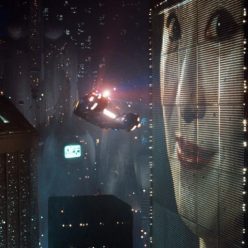Edgar Wright is, in my opinion, the strongest example of a director/creator who uses transitions and the way he cuts and shapes the scenes to help frame the story and gives a clear direction of the narrative; be it when the movement of the character’s head or eyes dictates the flow of the scene and story (for example, the attached scene in Hot Fuzz), the very literal movement of frame to frame in Scott Pilgrim or the fast paced whip pan transitions used to set a scene in Shaun of the Dead. This success is what I want to achieve also.
HB
Bibliography
After Hours at Rick’s. (2014). Wes Anderson’s Grand Budapest Hotel; confecting a modern Buster Keaton comedy. [online] Available at: https://afterhourswithersi.wordpress.com/2014/03/25/wes-andersons-grand-budapest-hotel-confecting-a-modern-buster-keaton-comedy/.
Barnard, L. (2014). Wes Anderson shares secrets about making the Grand Budapest Hotel | Toronto Star. [online] thestar.com. Available at: https://www.thestar.com/entertainment/movies/2014/03/13/wes_anderson_shares_secrets_about_making_the_grand_budapest_hotel.html.
Bordwell, D. (2007). Observations on film art » Funny framings » Print. [online] Davidbordwell.net. Available at: http://www.davidbordwell.net/blog/2007/04/30/funny-framings/print/.
Hamid, R. (2014). The General. [online] Senses of Cinema. Available at: http://sensesofcinema.com/2014/cteq/the-general/.
Hauser, F. and Reich, R. (2003). Notes on directing. New York: Walker & Co.
Keaton, B. and Sweeney, K. (2007). Buster Keaton. Jackson: University Press of Mississippi.
Knopf, R. (1999). The theater and cinema of Buster Keaton. Princeton, NJ: Princeton University Press.
Kunze, P. (2014). The films of Wes Anderson. Palgrave Macmillan.
LYNSKEY, D. (2014). Film By Film: Wes Anderson On Wes Anderson. [online] Empire. Available at: https://www.empireonline.com/movies/features/wes-anderson/ [Accessed 1 Jan. 2018].
Morefield, K. (2015). Faith and spirituality in masters of world cinema. Newcastle upon Tyne: Cambridge Scholars Publishing.
Mufson, B. (2018). Why Buster Keaton’s the OG of Physical Comedy. [online] Creators. Available at: https://creators.vice.com/en_uk/article/vvyx9j/why-buster-keatons-the-og-of-physical-comedy.
Prikryl, J. (2011). The Genius of Buster. [online] The New York Review of Books. Available at: http://www.nybooks.com/articles/2011/06/09/genius-buster-keaton/.
Puschak, E. (2016). Scott Pilgrim: Make Your Transitions Count.
Available at: https://www.youtube.com/watch?v=pij5lihbC6k.
Runquist, K. (2017). Edgar Wright: How to Make a Protagonist | Video Essay. [online] YouTube. Available at: https://www.youtube.com/watch?v=p6nFIogiMRg.
Terkel, S. and Keaton, B. (1960). Buster Keaton talks with Studs Terkel ; 1960/09/05.
Trahair, L. (2004). The Narrative-Machine: Buster Keaton’s Cinematic Comedy, Deleuze’s Recursion Function and the Operational Aesthetic. [online] Senses of Cinema. Available at: http://sensesofcinema.com/2004/comedy-and-perception/keaton_deleuze/.
YouTube. (2018). Casino Royale shot – Whip Pan. [online] Available at: https://www.youtube.com/watch?v=6qjCwb9DoaI.
YouTube. (2018). Hızlı Pan (Whip Pan) – Bruce Lee. [online] Available at: https://www.youtube.com/watch?v=KTTAbdUL1LQ.
Zhou, T. (2015). Buster Keaton – The Art of the Gag.
Available at: https://www.youtube.com/watch?v=UWEjxkkB8Xs.
